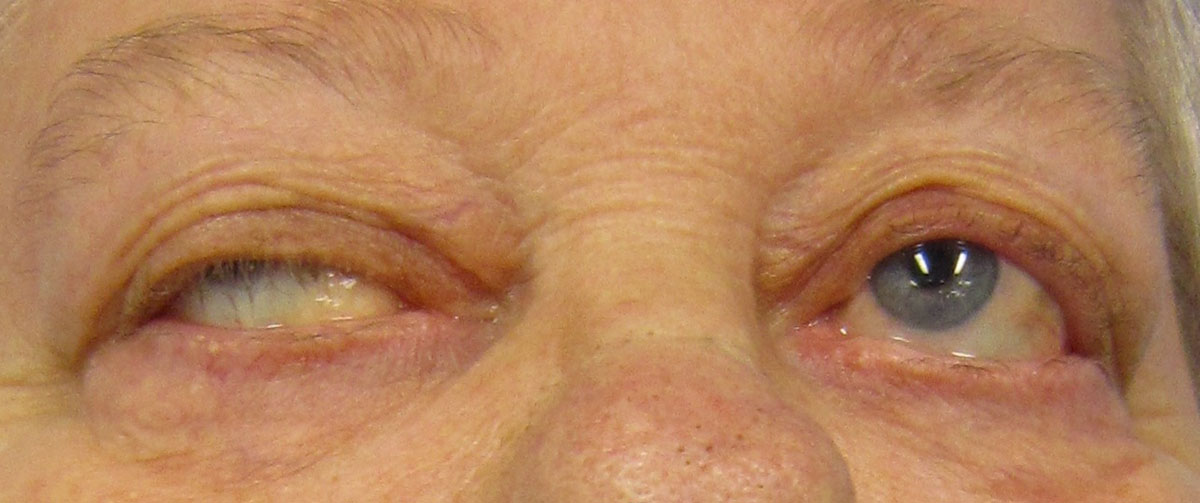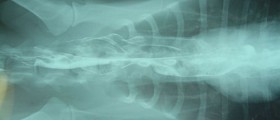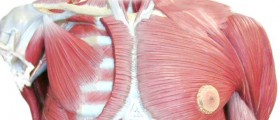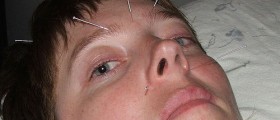Myasthenia gravis is a rare, chronic autoimmune neuromuscular disease that causes weakness of voluntary muscles. People of any age can be affected by this disease, but it is most commonly seen in women aged between 20 and 40. Men above the age of 50 are at higher risk of myasthenia gravis.
Causes of Myasthenia Gravis
Myasthenia gravis occurs due to interrupted communication between skeletal muscles and the nerves that control them. Normally, muscle movement depends on chemical signals from nerves. When these signals reach the nerve endings it triggers the release of a chemical called acetylcholine in the space called the neuromuscular junction where nerve cells connect with muscles. Acetylcholine binds with acetylcholine receptors causing the muscles to contract.
Myasthenia gravis is an autoimmune disorder. It occurs when the immune system produces antibodies to attack and destroy the acetylcholine receptors. Because of that, muscles do not receive nerve signals and cannot contract properly leading to muscle weakness. Myasthenia gravis can affect up to 80% of the receptors.
Exact cause of the autoimmune disorder is unknown. However, the thymus gland, an organ of the immune system located above the heart, is believed to play an important role in the development of myasthenia gravis. The precise role of the thymus is not understood but it has been observed that most people affected by myasthenia gravis have abnormally large thymus glands and some of them have tumors of the thymus.
- Myasthenia gravis has a prevalence of 20 per 100,000 population in the US. It exhibits a female predominance in those less than 40 years of age and a male predominance in those greater than 50 years of age. Childhood MG is quite uncommon in the western populations but is prevalent in Asian countries, with the involvement of around 50% of patients aged less than 15 years. They usually present with symptoms of extraocular muscle weakness.
- Around 85% of patients will have extraocular muscle weakness on the initial presentation. Common patient complaints include diplopia, ptosis, or both. These symptoms can progress and cause generalized MG involving the bulbar, axial, and limb muscles in 50% of patients in two years.
- Bulbar muscle weakness can be the initial presentation in 15% of patients and causes symptoms like difficulty chewing or frequent choking, dysphagia, hoarseness, and dysarthria. The involvement of facial muscles causes an expressionless face, and neck muscle involvement causes a dropped-head syndrome.
- Serologic test is very specific, and it confirms the diagnosis in patients with classical clinical findings. It is present in four-fifths of patients with generalized MG and only in half of the patients with pure ocular MG. The rest of the patients, about 5% to 10%, will demonstrate anti-MuSK antibodies. Only in a few sporadic cases, both anti-AChR and anti-MuSK antibodies are present in the same patient. The 3% to 50% of the remaining patients who are seronegative to either of these antibodies will demonstrate anti-LRP4 antibodies. Anti-striated muscle antibodies are present in 30% of MG patients. They are more useful as a serologic marker for thymoma, especially in younger patients.
- Most patients with MG have a near-normal life span with the current treatment modalities. Fifty years ago, the mortality rate was around 50% to 80% in myasthenic crisis, and now it has reduced substantially to 4.47%. Morbidity results from intermittent muscle weakness leading to aspiration pneumonia and the adverse effects of medications.
Symptoms of Myasthenia Gravis
Myasthenia gravis affects muscles that are controlled voluntarily. The facial muscles are usually affected first, especially the muscles controlling the eyelids. This causes eye problems such as eyelid drooping and double vision. Facial weakness can also cause difficulty chewing, swallowing, talking, and making facial expressions.
The disease eventually spreads to other areas and may cause weakness of the neck resulting in a drooping head. Limb muscles are usually also affected by myasthenia gravis leading to difficulty walking and lifting objects. Weakness of the chest wall muscles may result in breathing difficulty.
In general, muscle weakness caused by myasthenia gravis is aggravated by physical activity and improves with rest. With repetitive use, muscles become progressively weaker. Sometimes, severe weakness may occur suddenly (myasthenic crisis) due to an infection or stress.
Prevention of Myasthenia Gravis
It is impossible to prevent myasthenia gravis as the cause of the disease is unexplained. However, individuals affected by it can prevent flare-ups by avoiding stress, strenuous activities, and temperature extremes. People with myasthenia gravis should rest as much as possible and try to avoid exposure to infections such as the flu and the common cold.
- medlineplus.gov/myastheniagravis.html
- healthfinder.gov/NHO/nho.aspx?year=2015
- Photo courtesy of Cumulus by Wikimedia Commons: commons.wikimedia.org/wiki/File:Myasthenia.jpg


















Your thoughts on this
Loading...